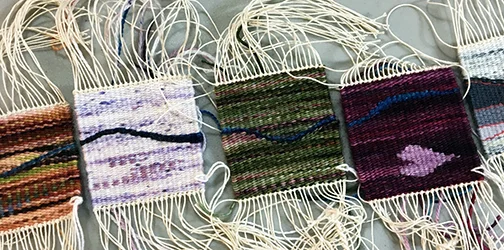There are as many ways to design for tapestry as there are tapestry weavers. Everyone has to find their own way. But over the last couple years I have employed one particular technique that I find shakes my brain loose and helps me conquer the fear that comes up when designing large pieces.
I start small. I don't have any fear at all about making something that is only a few inches square. The warp goes on quickly and whatever comes out of it, I'll have gotten in some practice and learned something about color and design.
The video below talks about this process and even shows me weaving one of these small pieces.







